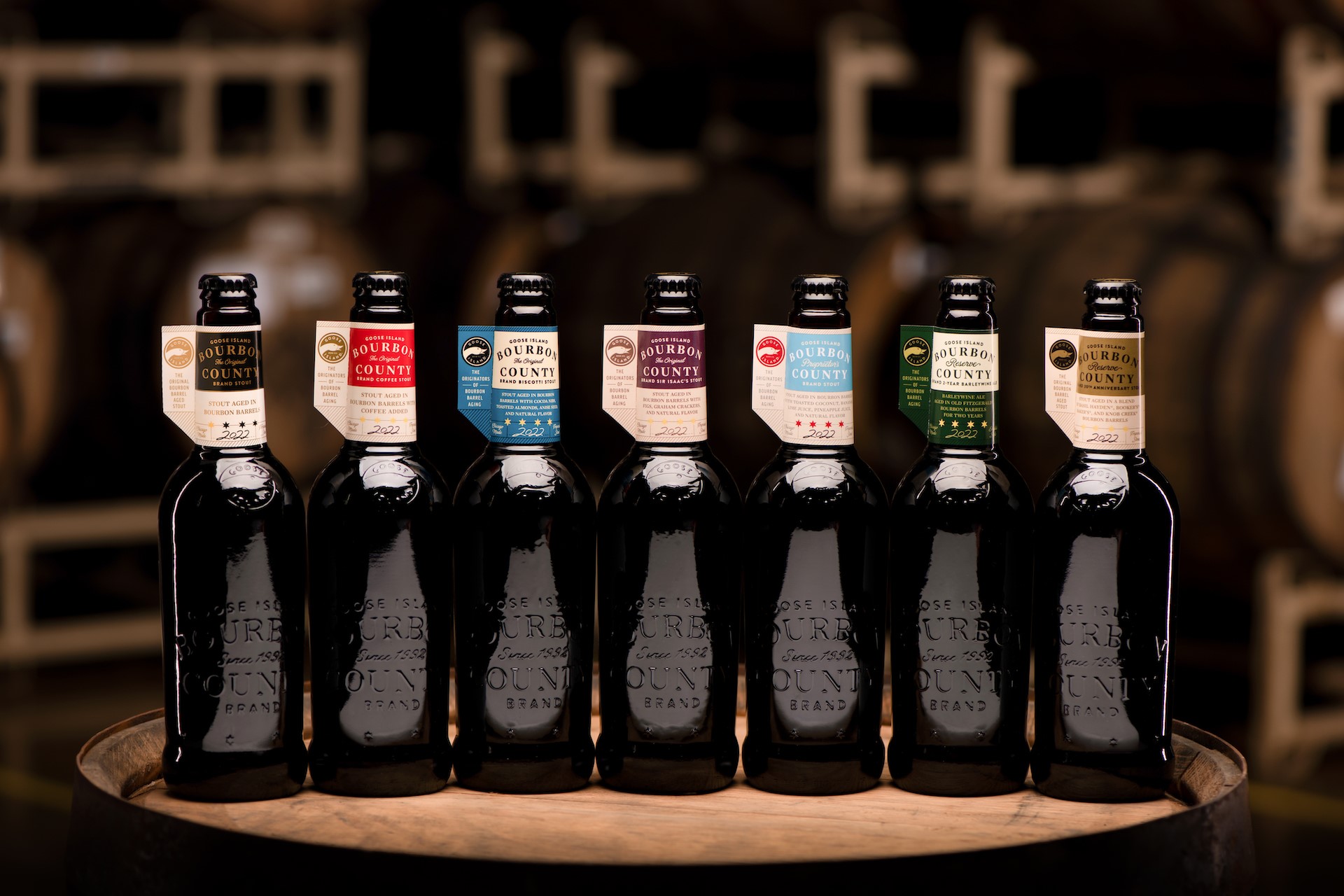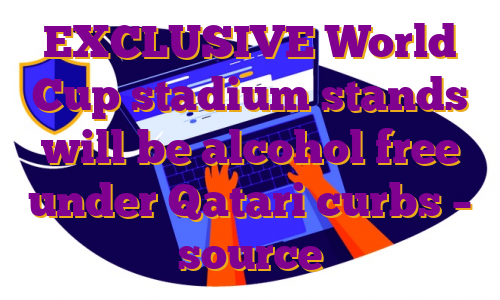Long-term trends are accelerating. The habitual pubgoer is a dying breed. People are not venturing out as frequently and when they do, they will drink less but better. And better no longer means simply a higher ABV beer. It’s the whole experience they look for and are willing to pay for.One thing, though, hasn’t changed. Draught beer remains at the heart of everything that defines a pub. It still accounts for 48% of sales, by value, and it’s something you’ve just got to get right.UK brewers, big and small, have an investment in that. The pandemic and rising prices might have turned spend towards more home drinking, but as Carlsberg Marston’s Brewing Company’s (CMBC) John Clements puts it, “pubs are where the magic happens”.There’s a sense that the crises pubs faced, and are facing, are forcing a reappraisal of the relationships between brewers and publicans.Asahi’s Steve Young describes “a shared problem that needs a strong industry approach. The pandemic shifted the dynamic towards collective working and we don’t want to lose that now”.“Pubs have had a tough couple of years but they’ve shown great resilience and spirit,” says Brian Perkins. president of Budweiser Brewing Group. “We’re committed to helping them face the challenges posed by inflation and working to bring marketing campaigns to life in pubs.” On the ball: former footballers Shaun Goater and Shaun Wright-Phillips, and Asahi’s Steve YoungOne important thing the brewing industry can do is share its insights into market trends.Beer volumes are down by more than 8% compared to 2019 but it’s a complex picture of winners and losers.Within that decline, lager, led by the world beer or ‘premium-plus’ category, and stout, predominantly Guinness, are running ahead of the market while ale is lagging badly despite new-wave craft keg brands widening their distribution and adding value on the bar.The lager picturePremiumisation has been happening in beer since woman mashed the first brew, perhaps 10,000 years ago. It’s just happening a lot faster now. And when it comes to lager, in a complex way. It’s certainly no longer simply about alcoholic strength.“There’s an acceleration of premiumisation, from core to world lagers, and a ‘squeezed middle’ between world and 4% premium lagers,” explains Mark Bentley, category controller for the on-trade at Molson Coors.“Shorter visits and less spontaneous occasions are causing people to trade up. But standard lager is still bringing the volume. It’s more important than you’d expect, even in a premium outlet. The question is what balance is right for your pub?”Heineken UK’s on-trade director Stephen Watt notes consumer tastes and demands “moving away from classic draught brands”.Premium lager, in particular, has almost doubled its value share of the market from 11.7% in 2017 to 22.7% in 2022, a trend that surged in the wake of the first lockdown as younger drinkers felt most confident to return to the pub.The winners were premium lagers with an Italian streak such as Moretti, Poretti, San Miguel and Peroni. And then came Madri.It seemed to appear out of nowhere, popping up on bars all over the country, and is already a top 10 lager brand. How did that happen?“Modern European lagers were taking off and Molson Coors wanted a brand in that space,” says Bentley. “We went to La Sagra Brewery in Spain where they developed a new recipe for the UK – Madri Excepcional – with a flavour profile somewhere between bitter and sweet, between Moretti and Peroni, with a clean finish.”
On the ball: former footballers Shaun Goater and Shaun Wright-Phillips, and Asahi’s Steve YoungOne important thing the brewing industry can do is share its insights into market trends.Beer volumes are down by more than 8% compared to 2019 but it’s a complex picture of winners and losers.Within that decline, lager, led by the world beer or ‘premium-plus’ category, and stout, predominantly Guinness, are running ahead of the market while ale is lagging badly despite new-wave craft keg brands widening their distribution and adding value on the bar.The lager picturePremiumisation has been happening in beer since woman mashed the first brew, perhaps 10,000 years ago. It’s just happening a lot faster now. And when it comes to lager, in a complex way. It’s certainly no longer simply about alcoholic strength.“There’s an acceleration of premiumisation, from core to world lagers, and a ‘squeezed middle’ between world and 4% premium lagers,” explains Mark Bentley, category controller for the on-trade at Molson Coors.“Shorter visits and less spontaneous occasions are causing people to trade up. But standard lager is still bringing the volume. It’s more important than you’d expect, even in a premium outlet. The question is what balance is right for your pub?”Heineken UK’s on-trade director Stephen Watt notes consumer tastes and demands “moving away from classic draught brands”.Premium lager, in particular, has almost doubled its value share of the market from 11.7% in 2017 to 22.7% in 2022, a trend that surged in the wake of the first lockdown as younger drinkers felt most confident to return to the pub.The winners were premium lagers with an Italian streak such as Moretti, Poretti, San Miguel and Peroni. And then came Madri.It seemed to appear out of nowhere, popping up on bars all over the country, and is already a top 10 lager brand. How did that happen?“Modern European lagers were taking off and Molson Coors wanted a brand in that space,” says Bentley. “We went to La Sagra Brewery in Spain where they developed a new recipe for the UK – Madri Excepcional – with a flavour profile somewhere between bitter and sweet, between Moretti and Peroni, with a clean finish.”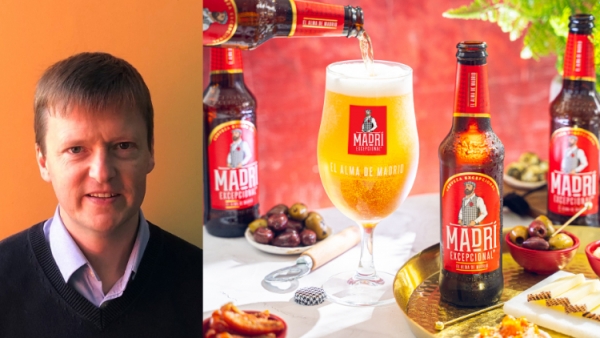 Exceptional performer: Mark Bentley and Madri ExcepcionalLaunched in late 2020, in no time it was in 10,000 outlets. Of course, it had to taste right, but Bentley also credits UK brewing’s biggest sales force “and strong relationships with the independent free trade”.“We had a lot of things lining up for us. Influential operators such as New World Trading Company took it up early and pubco tender cycles had been pushed back by the pandemic giving us a lot of opportunities to get it on the bar.”A social media campaign, ‘My first pint of 2021’, took off, Gary Neville Tweeted about it, and TV ads on the theme of ‘Madri-Mania’ reflected drinkers’ enthusiasm for the brand.“It looks the part, too,” adds Bentley. “The stemmed glass, the red branding. People know what it is instantly – a modern European lager. They look at it and get it.”“At Asahi, premiumisation is our friend,” declares Steve Young, UK sales director at the company, which has Peroni and Asahi Super Dry in its portfolio.“Premium-plus lagers are driving growth and, for pubs, it’s a chance to stretch the pricing ladder, offering people an attainable upgrade.“The appeal lies in a sense of provenance, quality credentials, added value. With Peroni, for instance, it’s the ingredients, the font, the glass. It feels much more. It’s not just ‘foreign’.”And now Asahi Super Dry is picking up on the trend, growing 35% in the on-trade this year. “People are experimenting. It’s Japanese, silver, different and cool.”Brewers have discovered they can deliver that premium experience at a lower ABV. John Price, head of marketing at KBE Drinks, which has dropped the ABV of its Kingfisher lager, famous for washing down curries since the 1970s, to 4.3%, believes that’s a largely untapped opportunity in the on-trade.“We surveyed lager drinkers and a third of them said they’re looking for ‘something new and different’. These drinkers are not being looked after in the ‘premium 4%’ segment, where there’s been much less product development than in world lager.”Heineken has also seized the opportunity, launching 4% Heineken Silver, brewed at a very low temperature with an equally low level of bitterness, into a lighter lager category that’s seen a 40% growth in market share over the past five years.
Exceptional performer: Mark Bentley and Madri ExcepcionalLaunched in late 2020, in no time it was in 10,000 outlets. Of course, it had to taste right, but Bentley also credits UK brewing’s biggest sales force “and strong relationships with the independent free trade”.“We had a lot of things lining up for us. Influential operators such as New World Trading Company took it up early and pubco tender cycles had been pushed back by the pandemic giving us a lot of opportunities to get it on the bar.”A social media campaign, ‘My first pint of 2021’, took off, Gary Neville Tweeted about it, and TV ads on the theme of ‘Madri-Mania’ reflected drinkers’ enthusiasm for the brand.“It looks the part, too,” adds Bentley. “The stemmed glass, the red branding. People know what it is instantly – a modern European lager. They look at it and get it.”“At Asahi, premiumisation is our friend,” declares Steve Young, UK sales director at the company, which has Peroni and Asahi Super Dry in its portfolio.“Premium-plus lagers are driving growth and, for pubs, it’s a chance to stretch the pricing ladder, offering people an attainable upgrade.“The appeal lies in a sense of provenance, quality credentials, added value. With Peroni, for instance, it’s the ingredients, the font, the glass. It feels much more. It’s not just ‘foreign’.”And now Asahi Super Dry is picking up on the trend, growing 35% in the on-trade this year. “People are experimenting. It’s Japanese, silver, different and cool.”Brewers have discovered they can deliver that premium experience at a lower ABV. John Price, head of marketing at KBE Drinks, which has dropped the ABV of its Kingfisher lager, famous for washing down curries since the 1970s, to 4.3%, believes that’s a largely untapped opportunity in the on-trade.“We surveyed lager drinkers and a third of them said they’re looking for ‘something new and different’. These drinkers are not being looked after in the ‘premium 4%’ segment, where there’s been much less product development than in world lager.”Heineken has also seized the opportunity, launching 4% Heineken Silver, brewed at a very low temperature with an equally low level of bitterness, into a lighter lager category that’s seen a 40% growth in market share over the past five years.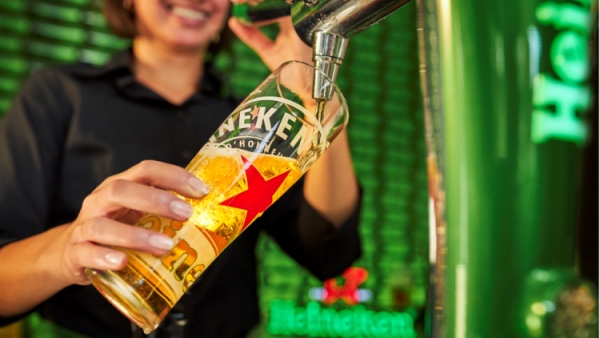 Ever popular: Heineken lager“It’s easy to focus on the more exciting continental premium lagers and craft beers,” says the brewer’s Stephen Watt. “But it’s important not to forget the growing demand for lighter-tasting premium lager driven by next-generation beer drinkers.”Silver can sit alongside Heineken’s established 4% players, Foster’s and Amstel, he believes, with the latter “converting some volume sales from classic lager to a higher-priced pint, landing more cash in the till, and funnelling consumers up the pricing ladder.”The cask conundrumCask beer, already in difficulties, was hit hard by the pandemic as some brewers and licensees lost confidence in a short shelf-life product, and there were issues with supply. Sales are down more than 20% compared to 2019.Molson Coors’ Bentley admits the company’s market leader, Doom Bar, has slumped even more but he still believes the brand “can give pubs a solid foundation” to a range that should be based more on varying colours and styles, rather than strengths.“The highest volumes are in beers of around 4% abv,” says Theakston’s joint managing director Richard Bradbury, a man with experience at both Heineken and Marston’s. “So get your basic range right, your sessionable strengths first then experiment with ABVs and colours to bring in different consumers.“It’s important to maintain a balance between the core offer and no more than one or two beers on rotation to create interest. Rotating all of them doesn’t help.”
Ever popular: Heineken lager“It’s easy to focus on the more exciting continental premium lagers and craft beers,” says the brewer’s Stephen Watt. “But it’s important not to forget the growing demand for lighter-tasting premium lager driven by next-generation beer drinkers.”Silver can sit alongside Heineken’s established 4% players, Foster’s and Amstel, he believes, with the latter “converting some volume sales from classic lager to a higher-priced pint, landing more cash in the till, and funnelling consumers up the pricing ladder.”The cask conundrumCask beer, already in difficulties, was hit hard by the pandemic as some brewers and licensees lost confidence in a short shelf-life product, and there were issues with supply. Sales are down more than 20% compared to 2019.Molson Coors’ Bentley admits the company’s market leader, Doom Bar, has slumped even more but he still believes the brand “can give pubs a solid foundation” to a range that should be based more on varying colours and styles, rather than strengths.“The highest volumes are in beers of around 4% abv,” says Theakston’s joint managing director Richard Bradbury, a man with experience at both Heineken and Marston’s. “So get your basic range right, your sessionable strengths first then experiment with ABVs and colours to bring in different consumers.“It’s important to maintain a balance between the core offer and no more than one or two beers on rotation to create interest. Rotating all of them doesn’t help.”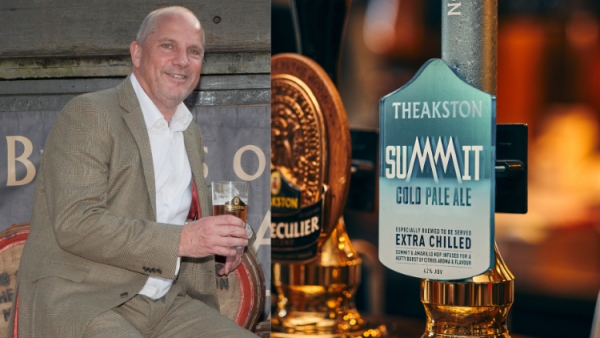 Cask treat: Theakston’s Richard Bradbury and SummitIf you want drinkers to pay more for cask, and reflect its true value, the quality has to be right. And that relies, among other things, on a high throughput.“Put on only what you know you can sell,” advises John Clements, sales and marketing director at CMBC, which is now focused on just two brands nationally, Wainwright’s, targeting the younger end of the market, and Hobgoblin, aimed at the older drinker.“Pubs reopened with so many restrictions and some have stopped selling cask beer, so we’ve cut down the range, putting quality first,” he explains. “We’re at a point where we have to make a change or cask beer could become irrelevant – and it’s so important to pubs.”The company is working on a ‘decision tree’ to help licensees choose beers that match the type of outlet and is pushing back on the urge to have a constantly changing range on the pumps.“Rotating beers are hit and miss, there are quality issues, and pubs often end up with too much of the same thing on the bar.”Against a gloomy backdrop, some brands are shining. Timothy Taylor’s Landlord has expanded distribution and increased rate of sale. It costs more, too, something Tim Dewey, the Yorkshire brewer’s chief executive, does not apologise about.“The market has allowed itself to be commoditised,” he says. “Beers are priced by ABV and cask ale is pigeonholed as a cheap product. But with Landlord we have never compromised on quality and we’ve invested in the brand.“We have a 16-strong sales force on the road, high-calibre people who understand our commercial argument – that we all need a margin and we should be unashamed that it’s premium.“It’s not an image thing. Consumers will pay more for it because they can taste the quality, a quality the sales team helps maintain by taste-testing on their calls and offering publicans help with cellar management.”Another, perhaps more surprising, winner in the cask beer market is Theakston’s Old Peculier, a dark ale that’s hard to categorise. Its volumes are up 10% against pre-Covid levels.“It’s been going into pubs on a rotation, then people have been asking for it to be kept on,” says Richard Bradbury. “Craft beer has helped us, I think. People are used to drinking more unusual beers at higher ABVs.”Theakston has also launched a very different style of beer into the category. Summit is a cask ale served at 6 to 8°C through a dedicated chilled line and stand-alone font.“It’s building well,” reports Bradbury. “The hot summer was in our favour and when people try it, they tend to stick with it.”He believes the cask market has the potential to recover, based on the shift to premium beers.“But the supply chain is still fragile and licensees are worried about wastage, nervous about ranging. Many older publicans have left the trade and cask is a bit of a mystery to younger newcomers. We have to give licensees confidence in cask, take away the mystery, make it simple. It may have been over-mystified. It’s really not difficult to do it well.”Modern kegCraft continues grow and may even have had a boost through the pandemic as drinkers experimented more and explored new styles and flavours.But that edgier aspect has been confined mostly to specialist bars, taprooms and bottle shops. For mainstream pubs, craft is making its mark through more accessible brews, tempered pale ales that are hoppy, but not too hoppy, and designed to be drunk in pints, rather than thirds.Heineken UK’s Stephen Watt puts the category’s steady, rather than spectacular, performance down to the entry of bigger brewers. Heineken itself, for instance, has now taken full ownership of Beavertown, driving distribution of Neck Oil and the stronger Gamma Ray into pubs that have often been surprised to find them appealing to lager as well as ale drinkers.Beavertown is now the fastest growing top 10 craft brand, tripling its market share in the past two years.“Beers such as Neck Oil introduce drinkers into the world of craft, often trading them up from other beer categories,” Watt explains. “These ‘craft curious’ consumers are looking for sessionable and trusted options before venturing into more challenging beers.“They are also a signpost telling craft drinkers their needs are being met and can draw them into pubs that might be overlooked in favour of a more craft-focused bar.”CMBC’s John Clements agrees that while craft beer hasn’t quite lived up to early expectations, the performance of bigger brands has been “encouraging”.“Sessionable beers with a certain level of hops are becoming part of the mainstream. Beers such as our Hobgoblin IPA and Brooklyn Defender are not too niche. You could perhaps better describe them as ‘contemporary ales’.”Family brewers are getting in on it, too. Timothy Taylor’s targets Hopical Storm at younger drinkers.“It’s good to have a foot in that camp,” says Dewey. “It’s a hoppy beer for us, but it doesn’t knock your socks off. And we’ve made it 4% so you can enjoy two or three pints of it.”Goodness, it’s GuinnessGuinness has been another winner amid the turmoil of the past couple of years. According to Anna MacDonald, category marketing director for beer at Diageo, the pub trade’s most widely available brand has ramped up volumes “across all regions, though London is stellar”.Perhaps there was a degree of switching as some pubs dropped cask ale from the bar but MacDonald points to the fact investment in the stout continued through Covid.
Cask treat: Theakston’s Richard Bradbury and SummitIf you want drinkers to pay more for cask, and reflect its true value, the quality has to be right. And that relies, among other things, on a high throughput.“Put on only what you know you can sell,” advises John Clements, sales and marketing director at CMBC, which is now focused on just two brands nationally, Wainwright’s, targeting the younger end of the market, and Hobgoblin, aimed at the older drinker.“Pubs reopened with so many restrictions and some have stopped selling cask beer, so we’ve cut down the range, putting quality first,” he explains. “We’re at a point where we have to make a change or cask beer could become irrelevant – and it’s so important to pubs.”The company is working on a ‘decision tree’ to help licensees choose beers that match the type of outlet and is pushing back on the urge to have a constantly changing range on the pumps.“Rotating beers are hit and miss, there are quality issues, and pubs often end up with too much of the same thing on the bar.”Against a gloomy backdrop, some brands are shining. Timothy Taylor’s Landlord has expanded distribution and increased rate of sale. It costs more, too, something Tim Dewey, the Yorkshire brewer’s chief executive, does not apologise about.“The market has allowed itself to be commoditised,” he says. “Beers are priced by ABV and cask ale is pigeonholed as a cheap product. But with Landlord we have never compromised on quality and we’ve invested in the brand.“We have a 16-strong sales force on the road, high-calibre people who understand our commercial argument – that we all need a margin and we should be unashamed that it’s premium.“It’s not an image thing. Consumers will pay more for it because they can taste the quality, a quality the sales team helps maintain by taste-testing on their calls and offering publicans help with cellar management.”Another, perhaps more surprising, winner in the cask beer market is Theakston’s Old Peculier, a dark ale that’s hard to categorise. Its volumes are up 10% against pre-Covid levels.“It’s been going into pubs on a rotation, then people have been asking for it to be kept on,” says Richard Bradbury. “Craft beer has helped us, I think. People are used to drinking more unusual beers at higher ABVs.”Theakston has also launched a very different style of beer into the category. Summit is a cask ale served at 6 to 8°C through a dedicated chilled line and stand-alone font.“It’s building well,” reports Bradbury. “The hot summer was in our favour and when people try it, they tend to stick with it.”He believes the cask market has the potential to recover, based on the shift to premium beers.“But the supply chain is still fragile and licensees are worried about wastage, nervous about ranging. Many older publicans have left the trade and cask is a bit of a mystery to younger newcomers. We have to give licensees confidence in cask, take away the mystery, make it simple. It may have been over-mystified. It’s really not difficult to do it well.”Modern kegCraft continues grow and may even have had a boost through the pandemic as drinkers experimented more and explored new styles and flavours.But that edgier aspect has been confined mostly to specialist bars, taprooms and bottle shops. For mainstream pubs, craft is making its mark through more accessible brews, tempered pale ales that are hoppy, but not too hoppy, and designed to be drunk in pints, rather than thirds.Heineken UK’s Stephen Watt puts the category’s steady, rather than spectacular, performance down to the entry of bigger brewers. Heineken itself, for instance, has now taken full ownership of Beavertown, driving distribution of Neck Oil and the stronger Gamma Ray into pubs that have often been surprised to find them appealing to lager as well as ale drinkers.Beavertown is now the fastest growing top 10 craft brand, tripling its market share in the past two years.“Beers such as Neck Oil introduce drinkers into the world of craft, often trading them up from other beer categories,” Watt explains. “These ‘craft curious’ consumers are looking for sessionable and trusted options before venturing into more challenging beers.“They are also a signpost telling craft drinkers their needs are being met and can draw them into pubs that might be overlooked in favour of a more craft-focused bar.”CMBC’s John Clements agrees that while craft beer hasn’t quite lived up to early expectations, the performance of bigger brands has been “encouraging”.“Sessionable beers with a certain level of hops are becoming part of the mainstream. Beers such as our Hobgoblin IPA and Brooklyn Defender are not too niche. You could perhaps better describe them as ‘contemporary ales’.”Family brewers are getting in on it, too. Timothy Taylor’s targets Hopical Storm at younger drinkers.“It’s good to have a foot in that camp,” says Dewey. “It’s a hoppy beer for us, but it doesn’t knock your socks off. And we’ve made it 4% so you can enjoy two or three pints of it.”Goodness, it’s GuinnessGuinness has been another winner amid the turmoil of the past couple of years. According to Anna MacDonald, category marketing director for beer at Diageo, the pub trade’s most widely available brand has ramped up volumes “across all regions, though London is stellar”.Perhaps there was a degree of switching as some pubs dropped cask ale from the bar but MacDonald points to the fact investment in the stout continued through Covid.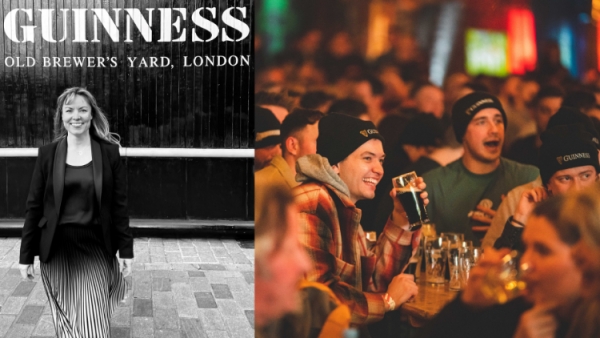 Dark arts: Anna Macdonald and Guinness drinkers“When they do go out now, people want to make the most of it, spend their money well. They are looking for value, not necessarily the cheapest option, and Guinness is a distinctive brand that occupies a sweet spot. It’s seen as worth paying more for, and flavourful beer is growing.”Focus on the core draught product has intensified since the Hop House Project spin-offs were dropped, and MacDonald would like to extend the brand’s key activities around rugby and St Patrick’s Day through the rest of the year. That will include the football World Cup this time with a November kick-off benefiting the stout.“And quality remains paramount. There’s huge staff turnover at the moment so our quality teams are out there troubleshooting. We want to stay close to pubs.”Free beerNo and low-alcohol beers may be a tiny part of the market, but that could be transformed in the months ahead as more draught taps appear on bars.Laura Willoughby, who heads mindful drinking organisation Club Soda, believes “the opportunity is massive”.“Draught takes availability to a new level and normalises asking for an alcohol-free drink. Most importantly it means people don’t have to absent themselves from the pub if they’ve decided not to drink, and it encourages lunchtime visits.”There are technical challenges that brewers are beginning to overcome and Heineken 0.0 is being introduced into “hundreds” of pubs this using existing cellar equipment.Heineken backs the move with research suggesting that beer drinkers tend to stay in the category when moderating.“The same data shows no and low-alcohol beer drinkers visit the on-trade more frequently compared to the average beer consumer and spend more when there,” says Heineken’s Watt. “No and low is not a passing novelty but a fast-growing trend that innovation has made easier for licensees to tap into.”CMBC’s Clements believes brewers have been “standing on the edge, deciding when to jump in” when it comes to alcohol-free. “Now it’s time to take the category seriously – it’s already 14% of the market in Europe.”With brands such as Erdinger Alcoholfrei, Shipyard Low Tide and Brooklyn Special Effects, the brewer is launching a ‘Find Your Free’ campaign in the on-trade early next year, focused on getting the right beers in the right pubs, introducing simple communication tools and extending trial of 0.0% San Miguel.“It’s an untapped opportunity,” says Clements. “Alcohol-free is often on the bottom shelf, a distress purchase. But half of consumers want to moderate their drinking and pubs have got to give up a tap and accept a lower rate of sale.”“There’s a race going on around draught quality,” says Steve Young of Asahi which is focusing on Peroni Nastro Azzuro 0.0%.“There are lots of compelling reasons to have a good low-alcohol offer – 25% of young people don’t drink alcohol at all and there’s less stigma around not drinking. We predict alcohol-free will be 20% of our business by 2030.”Thompson’s viewRupert Thompson’s long career in beer has taken him from marketing the biggest brands in the country to chairman of Hogs Back Brewery in Surrey. Having seen the industry from both perspectives, he’s concerned the pandemic may have swayed the market too much towards global brewers.“The globals are dominating channels to market, focusing on a few brands and the most profitable sectors, especially world beers.“That’s not healthy. Shipping beer around the world could be seen as irresponsible and the market is dumbed down by ersatz beers controlled by marketers – and I say that as someone who’s done that job.“Authenticity is becoming more important, though. Consumers can become aware and know they have alternatives, a story they like better.”Thompson is encouraged by the emergence of UK-brewed craft lager brands. “They have a story with more resonance” but “cask has a bigger problem”.“Almost every trend is against cask, though what’s absolutely in its favour is that, at its best, it’s outstanding, and I can see many drinkers returning to fresh, natural beer.“But cask needs redefining, re-presenting to a new set of consumers. The product is right, there’s a long-term commercial opportunity there. But the imagery is all wrong.“Cask must be premiumised and sold at a fair profit so brewers can re-invest in it. That will need determination, but we’ve little left to lose.”New brands could be key, he believes, and When Hogs Fly, Hogs Back’s first collaboration brew, with London craft brewer Mondo, is an example.“The volumes are small, but who cares? I’d rather sell half as much and make more profit. It’s a simple logic. And these beers are presented differently. This way, we’ll see a resurgence in cask.”Stroud and proudThe desire to drink local is a trend that was strengthened in the pandemic as people supported their communities and the effect has certainly been noticed at all-organic Stroud Brewery in Gloucestershire.“Our sales have doubled and we have gained a lot of good local regular customers,” says managing director Greg Pilley. “Our direct delivery operation is working three days a week calling on 50 pubs, and 70% of our sales are within a 50-mile radius of the brewery.“We trade on our relationships. Service is counting for a lot. Hospitality needs to know a delivery will happen and that a brewer will sort out any problems. The way we communicate with them will help us grow.“We are making a case for cask as a sustainable product. People like to drink beer that reduces their carbon footprint – and organic is even better.“So there’s an opportunity for us to offer something different. There are very few organic cask ales in pubs. It’s quite high end, high value and it’s really expensive to make but producing organic beers shouldn’t mean reduced margins.”Stroud sales manager Mike Powell is targeting food-led businesses with an interest in sustainability that want to part of the solution.The price of a pintThere have been some, hopefully unfounded, scare stories flying around about just how expensive a pint in the pub could become. It’s true, though, that brewers’ costs are rising fast.“The main cost drivers for our business are energy and grain – both of which have increased in price significantly over the past year,” says Budweiser’s Brian Perkins.“We’re managing the impact by continuing to brew our entire portfolio with renewable electricity, by switching to alternative fuels such as HVO for logistics, commencing work on green hydrogen production and accelerating plans to achieve net zero brewing by 2026.” .
Dark arts: Anna Macdonald and Guinness drinkers“When they do go out now, people want to make the most of it, spend their money well. They are looking for value, not necessarily the cheapest option, and Guinness is a distinctive brand that occupies a sweet spot. It’s seen as worth paying more for, and flavourful beer is growing.”Focus on the core draught product has intensified since the Hop House Project spin-offs were dropped, and MacDonald would like to extend the brand’s key activities around rugby and St Patrick’s Day through the rest of the year. That will include the football World Cup this time with a November kick-off benefiting the stout.“And quality remains paramount. There’s huge staff turnover at the moment so our quality teams are out there troubleshooting. We want to stay close to pubs.”Free beerNo and low-alcohol beers may be a tiny part of the market, but that could be transformed in the months ahead as more draught taps appear on bars.Laura Willoughby, who heads mindful drinking organisation Club Soda, believes “the opportunity is massive”.“Draught takes availability to a new level and normalises asking for an alcohol-free drink. Most importantly it means people don’t have to absent themselves from the pub if they’ve decided not to drink, and it encourages lunchtime visits.”There are technical challenges that brewers are beginning to overcome and Heineken 0.0 is being introduced into “hundreds” of pubs this using existing cellar equipment.Heineken backs the move with research suggesting that beer drinkers tend to stay in the category when moderating.“The same data shows no and low-alcohol beer drinkers visit the on-trade more frequently compared to the average beer consumer and spend more when there,” says Heineken’s Watt. “No and low is not a passing novelty but a fast-growing trend that innovation has made easier for licensees to tap into.”CMBC’s Clements believes brewers have been “standing on the edge, deciding when to jump in” when it comes to alcohol-free. “Now it’s time to take the category seriously – it’s already 14% of the market in Europe.”With brands such as Erdinger Alcoholfrei, Shipyard Low Tide and Brooklyn Special Effects, the brewer is launching a ‘Find Your Free’ campaign in the on-trade early next year, focused on getting the right beers in the right pubs, introducing simple communication tools and extending trial of 0.0% San Miguel.“It’s an untapped opportunity,” says Clements. “Alcohol-free is often on the bottom shelf, a distress purchase. But half of consumers want to moderate their drinking and pubs have got to give up a tap and accept a lower rate of sale.”“There’s a race going on around draught quality,” says Steve Young of Asahi which is focusing on Peroni Nastro Azzuro 0.0%.“There are lots of compelling reasons to have a good low-alcohol offer – 25% of young people don’t drink alcohol at all and there’s less stigma around not drinking. We predict alcohol-free will be 20% of our business by 2030.”Thompson’s viewRupert Thompson’s long career in beer has taken him from marketing the biggest brands in the country to chairman of Hogs Back Brewery in Surrey. Having seen the industry from both perspectives, he’s concerned the pandemic may have swayed the market too much towards global brewers.“The globals are dominating channels to market, focusing on a few brands and the most profitable sectors, especially world beers.“That’s not healthy. Shipping beer around the world could be seen as irresponsible and the market is dumbed down by ersatz beers controlled by marketers – and I say that as someone who’s done that job.“Authenticity is becoming more important, though. Consumers can become aware and know they have alternatives, a story they like better.”Thompson is encouraged by the emergence of UK-brewed craft lager brands. “They have a story with more resonance” but “cask has a bigger problem”.“Almost every trend is against cask, though what’s absolutely in its favour is that, at its best, it’s outstanding, and I can see many drinkers returning to fresh, natural beer.“But cask needs redefining, re-presenting to a new set of consumers. The product is right, there’s a long-term commercial opportunity there. But the imagery is all wrong.“Cask must be premiumised and sold at a fair profit so brewers can re-invest in it. That will need determination, but we’ve little left to lose.”New brands could be key, he believes, and When Hogs Fly, Hogs Back’s first collaboration brew, with London craft brewer Mondo, is an example.“The volumes are small, but who cares? I’d rather sell half as much and make more profit. It’s a simple logic. And these beers are presented differently. This way, we’ll see a resurgence in cask.”Stroud and proudThe desire to drink local is a trend that was strengthened in the pandemic as people supported their communities and the effect has certainly been noticed at all-organic Stroud Brewery in Gloucestershire.“Our sales have doubled and we have gained a lot of good local regular customers,” says managing director Greg Pilley. “Our direct delivery operation is working three days a week calling on 50 pubs, and 70% of our sales are within a 50-mile radius of the brewery.“We trade on our relationships. Service is counting for a lot. Hospitality needs to know a delivery will happen and that a brewer will sort out any problems. The way we communicate with them will help us grow.“We are making a case for cask as a sustainable product. People like to drink beer that reduces their carbon footprint – and organic is even better.“So there’s an opportunity for us to offer something different. There are very few organic cask ales in pubs. It’s quite high end, high value and it’s really expensive to make but producing organic beers shouldn’t mean reduced margins.”Stroud sales manager Mike Powell is targeting food-led businesses with an interest in sustainability that want to part of the solution.The price of a pintThere have been some, hopefully unfounded, scare stories flying around about just how expensive a pint in the pub could become. It’s true, though, that brewers’ costs are rising fast.“The main cost drivers for our business are energy and grain – both of which have increased in price significantly over the past year,” says Budweiser’s Brian Perkins.“We’re managing the impact by continuing to brew our entire portfolio with renewable electricity, by switching to alternative fuels such as HVO for logistics, commencing work on green hydrogen production and accelerating plans to achieve net zero brewing by 2026.” .
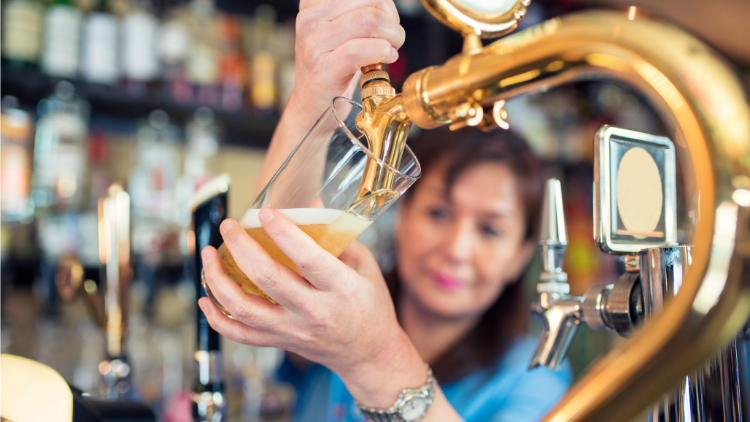


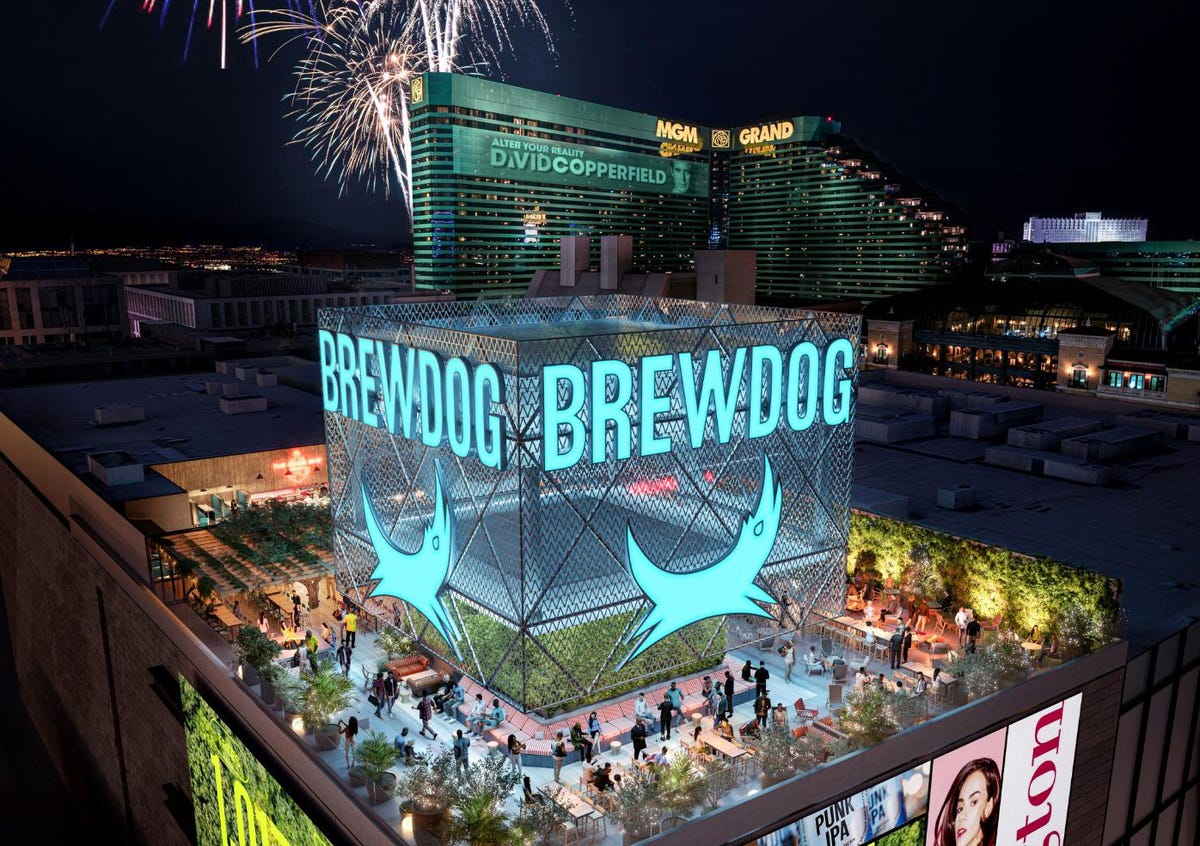
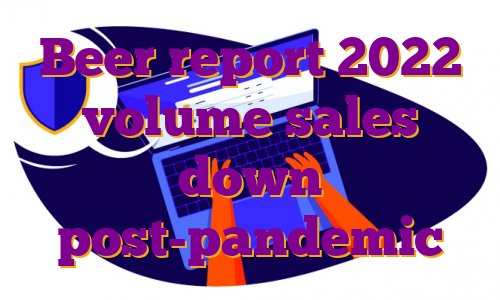
 On the ball: former footballers Shaun Goater and Shaun Wright-Phillips, and Asahi’s Steve YoungOne important thing the brewing industry can do is share its insights into market trends.Beer volumes are down by more than 8% compared to 2019 but it’s a complex picture of winners and losers.Within that decline, lager, led by the world beer or ‘premium-plus’ category, and stout, predominantly Guinness, are running ahead of the market while ale is lagging badly despite new-wave craft keg brands widening their distribution and adding value on the bar.The lager picturePremiumisation has been happening in beer since woman mashed the first brew, perhaps 10,000 years ago. It’s just happening a lot faster now. And when it comes to lager, in a complex way. It’s certainly no longer simply about alcoholic strength.“There’s an acceleration of premiumisation, from core to world lagers, and a ‘squeezed middle’ between world and 4% premium lagers,” explains Mark Bentley, category controller for the on-trade at Molson Coors.“Shorter visits and less spontaneous occasions are causing people to trade up. But standard lager is still bringing the volume. It’s more important than you’d expect, even in a premium outlet. The question is what balance is right for your pub?”Heineken UK’s on-trade director Stephen Watt notes consumer tastes and demands “moving away from classic draught brands”.Premium lager, in particular, has almost doubled its value share of the market from 11.7% in 2017 to 22.7% in 2022, a trend that surged in the wake of the first lockdown as younger drinkers felt most confident to return to the pub.The winners were premium lagers with an Italian streak such as Moretti, Poretti, San Miguel and Peroni. And then came Madri.It seemed to appear out of nowhere, popping up on bars all over the country, and is already a top 10 lager brand. How did that happen?“Modern European lagers were taking off and Molson Coors wanted a brand in that space,” says Bentley. “We went to La Sagra Brewery in Spain where they developed a new recipe for the UK – Madri Excepcional – with a flavour profile somewhere between bitter and sweet, between Moretti and Peroni, with a clean finish.”
On the ball: former footballers Shaun Goater and Shaun Wright-Phillips, and Asahi’s Steve YoungOne important thing the brewing industry can do is share its insights into market trends.Beer volumes are down by more than 8% compared to 2019 but it’s a complex picture of winners and losers.Within that decline, lager, led by the world beer or ‘premium-plus’ category, and stout, predominantly Guinness, are running ahead of the market while ale is lagging badly despite new-wave craft keg brands widening their distribution and adding value on the bar.The lager picturePremiumisation has been happening in beer since woman mashed the first brew, perhaps 10,000 years ago. It’s just happening a lot faster now. And when it comes to lager, in a complex way. It’s certainly no longer simply about alcoholic strength.“There’s an acceleration of premiumisation, from core to world lagers, and a ‘squeezed middle’ between world and 4% premium lagers,” explains Mark Bentley, category controller for the on-trade at Molson Coors.“Shorter visits and less spontaneous occasions are causing people to trade up. But standard lager is still bringing the volume. It’s more important than you’d expect, even in a premium outlet. The question is what balance is right for your pub?”Heineken UK’s on-trade director Stephen Watt notes consumer tastes and demands “moving away from classic draught brands”.Premium lager, in particular, has almost doubled its value share of the market from 11.7% in 2017 to 22.7% in 2022, a trend that surged in the wake of the first lockdown as younger drinkers felt most confident to return to the pub.The winners were premium lagers with an Italian streak such as Moretti, Poretti, San Miguel and Peroni. And then came Madri.It seemed to appear out of nowhere, popping up on bars all over the country, and is already a top 10 lager brand. How did that happen?“Modern European lagers were taking off and Molson Coors wanted a brand in that space,” says Bentley. “We went to La Sagra Brewery in Spain where they developed a new recipe for the UK – Madri Excepcional – with a flavour profile somewhere between bitter and sweet, between Moretti and Peroni, with a clean finish.” Exceptional performer: Mark Bentley and Madri ExcepcionalLaunched in late 2020, in no time it was in 10,000 outlets. Of course, it had to taste right, but Bentley also credits UK brewing’s biggest sales force “and strong relationships with the independent free trade”.“We had a lot of things lining up for us. Influential operators such as New World Trading Company took it up early and pubco tender cycles had been pushed back by the pandemic giving us a lot of opportunities to get it on the bar.”A social media campaign, ‘My first pint of 2021’, took off, Gary Neville Tweeted about it, and TV ads on the theme of ‘Madri-Mania’ reflected drinkers’ enthusiasm for the brand.“It looks the part, too,” adds Bentley. “The stemmed glass, the red branding. People know what it is instantly – a modern European lager. They look at it and get it.”“At Asahi, premiumisation is our friend,” declares Steve Young, UK sales director at the company, which has Peroni and Asahi Super Dry in its portfolio.“Premium-plus lagers are driving growth and, for pubs, it’s a chance to stretch the pricing ladder, offering people an attainable upgrade.“The appeal lies in a sense of provenance, quality credentials, added value. With Peroni, for instance, it’s the ingredients, the font, the glass. It feels much more. It’s not just ‘foreign’.”And now Asahi Super Dry is picking up on the trend, growing 35% in the on-trade this year. “People are experimenting. It’s Japanese, silver, different and cool.”Brewers have discovered they can deliver that premium experience at a lower ABV. John Price, head of marketing at KBE Drinks, which has dropped the ABV of its Kingfisher lager, famous for washing down curries since the 1970s, to 4.3%, believes that’s a largely untapped opportunity in the on-trade.“We surveyed lager drinkers and a third of them said they’re looking for ‘something new and different’. These drinkers are not being looked after in the ‘premium 4%’ segment, where there’s been much less product development than in world lager.”Heineken has also seized the opportunity, launching 4% Heineken Silver, brewed at a very low temperature with an equally low level of bitterness, into a lighter lager category that’s seen a 40% growth in market share over the past five years.
Exceptional performer: Mark Bentley and Madri ExcepcionalLaunched in late 2020, in no time it was in 10,000 outlets. Of course, it had to taste right, but Bentley also credits UK brewing’s biggest sales force “and strong relationships with the independent free trade”.“We had a lot of things lining up for us. Influential operators such as New World Trading Company took it up early and pubco tender cycles had been pushed back by the pandemic giving us a lot of opportunities to get it on the bar.”A social media campaign, ‘My first pint of 2021’, took off, Gary Neville Tweeted about it, and TV ads on the theme of ‘Madri-Mania’ reflected drinkers’ enthusiasm for the brand.“It looks the part, too,” adds Bentley. “The stemmed glass, the red branding. People know what it is instantly – a modern European lager. They look at it and get it.”“At Asahi, premiumisation is our friend,” declares Steve Young, UK sales director at the company, which has Peroni and Asahi Super Dry in its portfolio.“Premium-plus lagers are driving growth and, for pubs, it’s a chance to stretch the pricing ladder, offering people an attainable upgrade.“The appeal lies in a sense of provenance, quality credentials, added value. With Peroni, for instance, it’s the ingredients, the font, the glass. It feels much more. It’s not just ‘foreign’.”And now Asahi Super Dry is picking up on the trend, growing 35% in the on-trade this year. “People are experimenting. It’s Japanese, silver, different and cool.”Brewers have discovered they can deliver that premium experience at a lower ABV. John Price, head of marketing at KBE Drinks, which has dropped the ABV of its Kingfisher lager, famous for washing down curries since the 1970s, to 4.3%, believes that’s a largely untapped opportunity in the on-trade.“We surveyed lager drinkers and a third of them said they’re looking for ‘something new and different’. These drinkers are not being looked after in the ‘premium 4%’ segment, where there’s been much less product development than in world lager.”Heineken has also seized the opportunity, launching 4% Heineken Silver, brewed at a very low temperature with an equally low level of bitterness, into a lighter lager category that’s seen a 40% growth in market share over the past five years. Ever popular: Heineken lager“It’s easy to focus on the more exciting continental premium lagers and craft beers,” says the brewer’s Stephen Watt. “But it’s important not to forget the growing demand for lighter-tasting premium lager driven by next-generation beer drinkers.”Silver can sit alongside Heineken’s established 4% players, Foster’s and Amstel, he believes, with the latter “converting some volume sales from classic lager to a higher-priced pint, landing more cash in the till, and funnelling consumers up the pricing ladder.”The cask conundrumCask beer, already in difficulties, was hit hard by the pandemic as some brewers and licensees lost confidence in a short shelf-life product, and there were issues with supply. Sales are down more than 20% compared to 2019.Molson Coors’ Bentley admits the company’s market leader, Doom Bar, has slumped even more but he still believes the brand “can give pubs a solid foundation” to a range that should be based more on varying colours and styles, rather than strengths.“The highest volumes are in beers of around 4% abv,” says Theakston’s joint managing director Richard Bradbury, a man with experience at both Heineken and Marston’s. “So get your basic range right, your sessionable strengths first then experiment with ABVs and colours to bring in different consumers.“It’s important to maintain a balance between the core offer and no more than one or two beers on rotation to create interest. Rotating all of them doesn’t help.”
Ever popular: Heineken lager“It’s easy to focus on the more exciting continental premium lagers and craft beers,” says the brewer’s Stephen Watt. “But it’s important not to forget the growing demand for lighter-tasting premium lager driven by next-generation beer drinkers.”Silver can sit alongside Heineken’s established 4% players, Foster’s and Amstel, he believes, with the latter “converting some volume sales from classic lager to a higher-priced pint, landing more cash in the till, and funnelling consumers up the pricing ladder.”The cask conundrumCask beer, already in difficulties, was hit hard by the pandemic as some brewers and licensees lost confidence in a short shelf-life product, and there were issues with supply. Sales are down more than 20% compared to 2019.Molson Coors’ Bentley admits the company’s market leader, Doom Bar, has slumped even more but he still believes the brand “can give pubs a solid foundation” to a range that should be based more on varying colours and styles, rather than strengths.“The highest volumes are in beers of around 4% abv,” says Theakston’s joint managing director Richard Bradbury, a man with experience at both Heineken and Marston’s. “So get your basic range right, your sessionable strengths first then experiment with ABVs and colours to bring in different consumers.“It’s important to maintain a balance between the core offer and no more than one or two beers on rotation to create interest. Rotating all of them doesn’t help.” Cask treat: Theakston’s Richard Bradbury and SummitIf you want drinkers to pay more for cask, and reflect its true value, the quality has to be right. And that relies, among other things, on a high throughput.“Put on only what you know you can sell,” advises John Clements, sales and marketing director at CMBC, which is now focused on just two brands nationally, Wainwright’s, targeting the younger end of the market, and Hobgoblin, aimed at the older drinker.“Pubs reopened with so many restrictions and some have stopped selling cask beer, so we’ve cut down the range, putting quality first,” he explains. “We’re at a point where we have to make a change or cask beer could become irrelevant – and it’s so important to pubs.”The company is working on a ‘decision tree’ to help licensees choose beers that match the type of outlet and is pushing back on the urge to have a constantly changing range on the pumps.“Rotating beers are hit and miss, there are quality issues, and pubs often end up with too much of the same thing on the bar.”Against a gloomy backdrop, some brands are shining. Timothy Taylor’s Landlord has expanded distribution and increased rate of sale. It costs more, too, something Tim Dewey, the Yorkshire brewer’s chief executive, does not apologise about.“The market has allowed itself to be commoditised,” he says. “Beers are priced by ABV and cask ale is pigeonholed as a cheap product. But with Landlord we have never compromised on quality and we’ve invested in the brand.“We have a 16-strong sales force on the road, high-calibre people who understand our commercial argument – that we all need a margin and we should be unashamed that it’s premium.“It’s not an image thing. Consumers will pay more for it because they can taste the quality, a quality the sales team helps maintain by taste-testing on their calls and offering publicans help with cellar management.”Another, perhaps more surprising, winner in the cask beer market is Theakston’s Old Peculier, a dark ale that’s hard to categorise. Its volumes are up 10% against pre-Covid levels.“It’s been going into pubs on a rotation, then people have been asking for it to be kept on,” says Richard Bradbury. “Craft beer has helped us, I think. People are used to drinking more unusual beers at higher ABVs.”Theakston has also launched a very different style of beer into the category. Summit is a cask ale served at 6 to 8°C through a dedicated chilled line and stand-alone font.“It’s building well,” reports Bradbury. “The hot summer was in our favour and when people try it, they tend to stick with it.”He believes the cask market has the potential to recover, based on the shift to premium beers.“But the supply chain is still fragile and licensees are worried about wastage, nervous about ranging. Many older publicans have left the trade and cask is a bit of a mystery to younger newcomers. We have to give licensees confidence in cask, take away the mystery, make it simple. It may have been over-mystified. It’s really not difficult to do it well.”Modern kegCraft continues grow and may even have had a boost through the pandemic as drinkers experimented more and explored new styles and flavours.But that edgier aspect has been confined mostly to specialist bars, taprooms and bottle shops. For mainstream pubs, craft is making its mark through more accessible brews, tempered pale ales that are hoppy, but not too hoppy, and designed to be drunk in pints, rather than thirds.Heineken UK’s Stephen Watt puts the category’s steady, rather than spectacular, performance down to the entry of bigger brewers. Heineken itself, for instance, has now taken full ownership of Beavertown, driving distribution of Neck Oil and the stronger Gamma Ray into pubs that have often been surprised to find them appealing to lager as well as ale drinkers.Beavertown is now the fastest growing top 10 craft brand, tripling its market share in the past two years.“Beers such as Neck Oil introduce drinkers into the world of craft, often trading them up from other beer categories,” Watt explains. “These ‘craft curious’ consumers are looking for sessionable and trusted options before venturing into more challenging beers.“They are also a signpost telling craft drinkers their needs are being met and can draw them into pubs that might be overlooked in favour of a more craft-focused bar.”CMBC’s John Clements agrees that while craft beer hasn’t quite lived up to early expectations, the performance of bigger brands has been “encouraging”.“Sessionable beers with a certain level of hops are becoming part of the mainstream. Beers such as our Hobgoblin IPA and Brooklyn Defender are not too niche. You could perhaps better describe them as ‘contemporary ales’.”Family brewers are getting in on it, too. Timothy Taylor’s targets Hopical Storm at younger drinkers.“It’s good to have a foot in that camp,” says Dewey. “It’s a hoppy beer for us, but it doesn’t knock your socks off. And we’ve made it 4% so you can enjoy two or three pints of it.”Goodness, it’s GuinnessGuinness has been another winner amid the turmoil of the past couple of years. According to Anna MacDonald, category marketing director for beer at Diageo, the pub trade’s most widely available brand has ramped up volumes “across all regions, though London is stellar”.Perhaps there was a degree of switching as some pubs dropped cask ale from the bar but MacDonald points to the fact investment in the stout continued through Covid.
Cask treat: Theakston’s Richard Bradbury and SummitIf you want drinkers to pay more for cask, and reflect its true value, the quality has to be right. And that relies, among other things, on a high throughput.“Put on only what you know you can sell,” advises John Clements, sales and marketing director at CMBC, which is now focused on just two brands nationally, Wainwright’s, targeting the younger end of the market, and Hobgoblin, aimed at the older drinker.“Pubs reopened with so many restrictions and some have stopped selling cask beer, so we’ve cut down the range, putting quality first,” he explains. “We’re at a point where we have to make a change or cask beer could become irrelevant – and it’s so important to pubs.”The company is working on a ‘decision tree’ to help licensees choose beers that match the type of outlet and is pushing back on the urge to have a constantly changing range on the pumps.“Rotating beers are hit and miss, there are quality issues, and pubs often end up with too much of the same thing on the bar.”Against a gloomy backdrop, some brands are shining. Timothy Taylor’s Landlord has expanded distribution and increased rate of sale. It costs more, too, something Tim Dewey, the Yorkshire brewer’s chief executive, does not apologise about.“The market has allowed itself to be commoditised,” he says. “Beers are priced by ABV and cask ale is pigeonholed as a cheap product. But with Landlord we have never compromised on quality and we’ve invested in the brand.“We have a 16-strong sales force on the road, high-calibre people who understand our commercial argument – that we all need a margin and we should be unashamed that it’s premium.“It’s not an image thing. Consumers will pay more for it because they can taste the quality, a quality the sales team helps maintain by taste-testing on their calls and offering publicans help with cellar management.”Another, perhaps more surprising, winner in the cask beer market is Theakston’s Old Peculier, a dark ale that’s hard to categorise. Its volumes are up 10% against pre-Covid levels.“It’s been going into pubs on a rotation, then people have been asking for it to be kept on,” says Richard Bradbury. “Craft beer has helped us, I think. People are used to drinking more unusual beers at higher ABVs.”Theakston has also launched a very different style of beer into the category. Summit is a cask ale served at 6 to 8°C through a dedicated chilled line and stand-alone font.“It’s building well,” reports Bradbury. “The hot summer was in our favour and when people try it, they tend to stick with it.”He believes the cask market has the potential to recover, based on the shift to premium beers.“But the supply chain is still fragile and licensees are worried about wastage, nervous about ranging. Many older publicans have left the trade and cask is a bit of a mystery to younger newcomers. We have to give licensees confidence in cask, take away the mystery, make it simple. It may have been over-mystified. It’s really not difficult to do it well.”Modern kegCraft continues grow and may even have had a boost through the pandemic as drinkers experimented more and explored new styles and flavours.But that edgier aspect has been confined mostly to specialist bars, taprooms and bottle shops. For mainstream pubs, craft is making its mark through more accessible brews, tempered pale ales that are hoppy, but not too hoppy, and designed to be drunk in pints, rather than thirds.Heineken UK’s Stephen Watt puts the category’s steady, rather than spectacular, performance down to the entry of bigger brewers. Heineken itself, for instance, has now taken full ownership of Beavertown, driving distribution of Neck Oil and the stronger Gamma Ray into pubs that have often been surprised to find them appealing to lager as well as ale drinkers.Beavertown is now the fastest growing top 10 craft brand, tripling its market share in the past two years.“Beers such as Neck Oil introduce drinkers into the world of craft, often trading them up from other beer categories,” Watt explains. “These ‘craft curious’ consumers are looking for sessionable and trusted options before venturing into more challenging beers.“They are also a signpost telling craft drinkers their needs are being met and can draw them into pubs that might be overlooked in favour of a more craft-focused bar.”CMBC’s John Clements agrees that while craft beer hasn’t quite lived up to early expectations, the performance of bigger brands has been “encouraging”.“Sessionable beers with a certain level of hops are becoming part of the mainstream. Beers such as our Hobgoblin IPA and Brooklyn Defender are not too niche. You could perhaps better describe them as ‘contemporary ales’.”Family brewers are getting in on it, too. Timothy Taylor’s targets Hopical Storm at younger drinkers.“It’s good to have a foot in that camp,” says Dewey. “It’s a hoppy beer for us, but it doesn’t knock your socks off. And we’ve made it 4% so you can enjoy two or three pints of it.”Goodness, it’s GuinnessGuinness has been another winner amid the turmoil of the past couple of years. According to Anna MacDonald, category marketing director for beer at Diageo, the pub trade’s most widely available brand has ramped up volumes “across all regions, though London is stellar”.Perhaps there was a degree of switching as some pubs dropped cask ale from the bar but MacDonald points to the fact investment in the stout continued through Covid. Dark arts: Anna Macdonald and Guinness drinkers“When they do go out now, people want to make the most of it, spend their money well. They are looking for value, not necessarily the cheapest option, and Guinness is a distinctive brand that occupies a sweet spot. It’s seen as worth paying more for, and flavourful beer is growing.”Focus on the core draught product has intensified since the Hop House Project spin-offs were dropped, and MacDonald would like to extend the brand’s key activities around rugby and St Patrick’s Day through the rest of the year. That will include the football World Cup this time with a November kick-off benefiting the stout.“And quality remains paramount. There’s huge staff turnover at the moment so our quality teams are out there troubleshooting. We want to stay close to pubs.”Free beerNo and low-alcohol beers may be a tiny part of the market, but that could be transformed in the months ahead as more draught taps appear on bars.Laura Willoughby, who heads mindful drinking organisation Club Soda, believes “the opportunity is massive”.“Draught takes availability to a new level and normalises asking for an alcohol-free drink. Most importantly it means people don’t have to absent themselves from the pub if they’ve decided not to drink, and it encourages lunchtime visits.”There are technical challenges that brewers are beginning to overcome and Heineken 0.0 is being introduced into “hundreds” of pubs this using existing cellar equipment.Heineken backs the move with research suggesting that beer drinkers tend to stay in the category when moderating.“The same data shows no and low-alcohol beer drinkers visit the on-trade more frequently compared to the average beer consumer and spend more when there,” says Heineken’s Watt. “No and low is not a passing novelty but a fast-growing trend that innovation has made easier for licensees to tap into.”CMBC’s Clements believes brewers have been “standing on the edge, deciding when to jump in” when it comes to alcohol-free. “Now it’s time to take the category seriously – it’s already 14% of the market in Europe.”With brands such as Erdinger Alcoholfrei, Shipyard Low Tide and Brooklyn Special Effects, the brewer is launching a ‘Find Your Free’ campaign in the on-trade early next year, focused on getting the right beers in the right pubs, introducing simple communication tools and extending trial of 0.0% San Miguel.“It’s an untapped opportunity,” says Clements. “Alcohol-free is often on the bottom shelf, a distress purchase. But half of consumers want to moderate their drinking and pubs have got to give up a tap and accept a lower rate of sale.”“There’s a race going on around draught quality,” says Steve Young of Asahi which is focusing on Peroni Nastro Azzuro 0.0%.“There are lots of compelling reasons to have a good low-alcohol offer – 25% of young people don’t drink alcohol at all and there’s less stigma around not drinking. We predict alcohol-free will be 20% of our business by 2030.”Thompson’s viewRupert Thompson’s long career in beer has taken him from marketing the biggest brands in the country to chairman of Hogs Back Brewery in Surrey. Having seen the industry from both perspectives, he’s concerned the pandemic may have swayed the market too much towards global brewers.“The globals are dominating channels to market, focusing on a few brands and the most profitable sectors, especially world beers.“That’s not healthy. Shipping beer around the world could be seen as irresponsible and the market is dumbed down by ersatz beers controlled by marketers – and I say that as someone who’s done that job.“Authenticity is becoming more important, though. Consumers can become aware and know they have alternatives, a story they like better.”Thompson is encouraged by the emergence of UK-brewed craft lager brands. “They have a story with more resonance” but “cask has a bigger problem”.“Almost every trend is against cask, though what’s absolutely in its favour is that, at its best, it’s outstanding, and I can see many drinkers returning to fresh, natural beer.“But cask needs redefining, re-presenting to a new set of consumers. The product is right, there’s a long-term commercial opportunity there. But the imagery is all wrong.“Cask must be premiumised and sold at a fair profit so brewers can re-invest in it. That will need determination, but we’ve little left to lose.”New brands could be key, he believes, and When Hogs Fly, Hogs Back’s first collaboration brew, with London craft brewer Mondo, is an example.“The volumes are small, but who cares? I’d rather sell half as much and make more profit. It’s a simple logic. And these beers are presented differently. This way, we’ll see a resurgence in cask.”Stroud and proudThe desire to drink local is a trend that was strengthened in the pandemic as people supported their communities and the effect has certainly been noticed at all-organic Stroud Brewery in Gloucestershire.“Our sales have doubled and we have gained a lot of good local regular customers,” says managing director Greg Pilley. “Our direct delivery operation is working three days a week calling on 50 pubs, and 70% of our sales are within a 50-mile radius of the brewery.“We trade on our relationships. Service is counting for a lot. Hospitality needs to know a delivery will happen and that a brewer will sort out any problems. The way we communicate with them will help us grow.“We are making a case for cask as a sustainable product. People like to drink beer that reduces their carbon footprint – and organic is even better.“So there’s an opportunity for us to offer something different. There are very few organic cask ales in pubs. It’s quite high end, high value and it’s really expensive to make but producing organic beers shouldn’t mean reduced margins.”Stroud sales manager Mike Powell is targeting food-led businesses with an interest in sustainability that want to part of the solution.The price of a pintThere have been some, hopefully unfounded, scare stories flying around about just how expensive a pint in the pub could become. It’s true, though, that brewers’ costs are rising fast.“The main cost drivers for our business are energy and grain – both of which have increased in price significantly over the past year,” says Budweiser’s Brian Perkins.“We’re managing the impact by continuing to brew our entire portfolio with renewable electricity, by switching to alternative fuels such as HVO for logistics, commencing work on green hydrogen production and accelerating plans to achieve net zero brewing by 2026.” .
Dark arts: Anna Macdonald and Guinness drinkers“When they do go out now, people want to make the most of it, spend their money well. They are looking for value, not necessarily the cheapest option, and Guinness is a distinctive brand that occupies a sweet spot. It’s seen as worth paying more for, and flavourful beer is growing.”Focus on the core draught product has intensified since the Hop House Project spin-offs were dropped, and MacDonald would like to extend the brand’s key activities around rugby and St Patrick’s Day through the rest of the year. That will include the football World Cup this time with a November kick-off benefiting the stout.“And quality remains paramount. There’s huge staff turnover at the moment so our quality teams are out there troubleshooting. We want to stay close to pubs.”Free beerNo and low-alcohol beers may be a tiny part of the market, but that could be transformed in the months ahead as more draught taps appear on bars.Laura Willoughby, who heads mindful drinking organisation Club Soda, believes “the opportunity is massive”.“Draught takes availability to a new level and normalises asking for an alcohol-free drink. Most importantly it means people don’t have to absent themselves from the pub if they’ve decided not to drink, and it encourages lunchtime visits.”There are technical challenges that brewers are beginning to overcome and Heineken 0.0 is being introduced into “hundreds” of pubs this using existing cellar equipment.Heineken backs the move with research suggesting that beer drinkers tend to stay in the category when moderating.“The same data shows no and low-alcohol beer drinkers visit the on-trade more frequently compared to the average beer consumer and spend more when there,” says Heineken’s Watt. “No and low is not a passing novelty but a fast-growing trend that innovation has made easier for licensees to tap into.”CMBC’s Clements believes brewers have been “standing on the edge, deciding when to jump in” when it comes to alcohol-free. “Now it’s time to take the category seriously – it’s already 14% of the market in Europe.”With brands such as Erdinger Alcoholfrei, Shipyard Low Tide and Brooklyn Special Effects, the brewer is launching a ‘Find Your Free’ campaign in the on-trade early next year, focused on getting the right beers in the right pubs, introducing simple communication tools and extending trial of 0.0% San Miguel.“It’s an untapped opportunity,” says Clements. “Alcohol-free is often on the bottom shelf, a distress purchase. But half of consumers want to moderate their drinking and pubs have got to give up a tap and accept a lower rate of sale.”“There’s a race going on around draught quality,” says Steve Young of Asahi which is focusing on Peroni Nastro Azzuro 0.0%.“There are lots of compelling reasons to have a good low-alcohol offer – 25% of young people don’t drink alcohol at all and there’s less stigma around not drinking. We predict alcohol-free will be 20% of our business by 2030.”Thompson’s viewRupert Thompson’s long career in beer has taken him from marketing the biggest brands in the country to chairman of Hogs Back Brewery in Surrey. Having seen the industry from both perspectives, he’s concerned the pandemic may have swayed the market too much towards global brewers.“The globals are dominating channels to market, focusing on a few brands and the most profitable sectors, especially world beers.“That’s not healthy. Shipping beer around the world could be seen as irresponsible and the market is dumbed down by ersatz beers controlled by marketers – and I say that as someone who’s done that job.“Authenticity is becoming more important, though. Consumers can become aware and know they have alternatives, a story they like better.”Thompson is encouraged by the emergence of UK-brewed craft lager brands. “They have a story with more resonance” but “cask has a bigger problem”.“Almost every trend is against cask, though what’s absolutely in its favour is that, at its best, it’s outstanding, and I can see many drinkers returning to fresh, natural beer.“But cask needs redefining, re-presenting to a new set of consumers. The product is right, there’s a long-term commercial opportunity there. But the imagery is all wrong.“Cask must be premiumised and sold at a fair profit so brewers can re-invest in it. That will need determination, but we’ve little left to lose.”New brands could be key, he believes, and When Hogs Fly, Hogs Back’s first collaboration brew, with London craft brewer Mondo, is an example.“The volumes are small, but who cares? I’d rather sell half as much and make more profit. It’s a simple logic. And these beers are presented differently. This way, we’ll see a resurgence in cask.”Stroud and proudThe desire to drink local is a trend that was strengthened in the pandemic as people supported their communities and the effect has certainly been noticed at all-organic Stroud Brewery in Gloucestershire.“Our sales have doubled and we have gained a lot of good local regular customers,” says managing director Greg Pilley. “Our direct delivery operation is working three days a week calling on 50 pubs, and 70% of our sales are within a 50-mile radius of the brewery.“We trade on our relationships. Service is counting for a lot. Hospitality needs to know a delivery will happen and that a brewer will sort out any problems. The way we communicate with them will help us grow.“We are making a case for cask as a sustainable product. People like to drink beer that reduces their carbon footprint – and organic is even better.“So there’s an opportunity for us to offer something different. There are very few organic cask ales in pubs. It’s quite high end, high value and it’s really expensive to make but producing organic beers shouldn’t mean reduced margins.”Stroud sales manager Mike Powell is targeting food-led businesses with an interest in sustainability that want to part of the solution.The price of a pintThere have been some, hopefully unfounded, scare stories flying around about just how expensive a pint in the pub could become. It’s true, though, that brewers’ costs are rising fast.“The main cost drivers for our business are energy and grain – both of which have increased in price significantly over the past year,” says Budweiser’s Brian Perkins.“We’re managing the impact by continuing to brew our entire portfolio with renewable electricity, by switching to alternative fuels such as HVO for logistics, commencing work on green hydrogen production and accelerating plans to achieve net zero brewing by 2026.” .
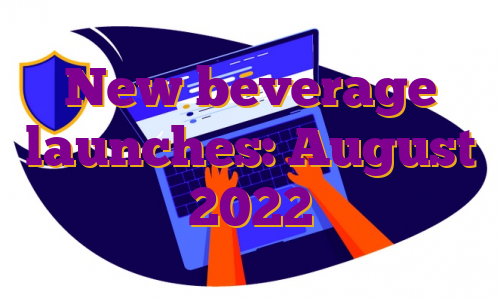
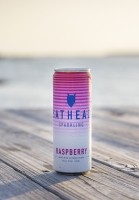 Mississippi distillery, Cathead Distillery, has revealed a new line of RTD sparkling vodka sodas, Cathead Sparkling Sunsetters.Inspired by ‘the magic of long summer evenings that fade into warm summer nights’, the Sunsetters variety pack features an assortment of four flavors at 5% ABV and with 97 calories per 12 oz serving: Raspberry, Mango, Ginger Pineapple, and Cucumber Mint.An extension of Cathead Distillery’s original line of canned sparkling vodka sodas—which launched in spring 2021—Cathead Sparkling Sunsetters adds to the existing available flavors of Cranberry, Limeade, Satsuma Mandarin, Strawberry Lemonade, and Grapefruit, all made with the brand’s flagship spirit, Cathead Vodka.Cathead Sparkling Sunsetters’ variety 8-packs are now available in select retailers across five states, including Florida, Georgia, Louisiana, Mississippi, and Tennessee.Horlicks fortified shakes
Mississippi distillery, Cathead Distillery, has revealed a new line of RTD sparkling vodka sodas, Cathead Sparkling Sunsetters.Inspired by ‘the magic of long summer evenings that fade into warm summer nights’, the Sunsetters variety pack features an assortment of four flavors at 5% ABV and with 97 calories per 12 oz serving: Raspberry, Mango, Ginger Pineapple, and Cucumber Mint.An extension of Cathead Distillery’s original line of canned sparkling vodka sodas—which launched in spring 2021—Cathead Sparkling Sunsetters adds to the existing available flavors of Cranberry, Limeade, Satsuma Mandarin, Strawberry Lemonade, and Grapefruit, all made with the brand’s flagship spirit, Cathead Vodka.Cathead Sparkling Sunsetters’ variety 8-packs are now available in select retailers across five states, including Florida, Georgia, Louisiana, Mississippi, and Tennessee.Horlicks fortified shakes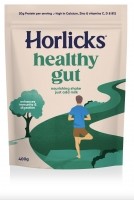 British brand Horlicks has launched its latest range, Horlicks Healthy: a range of four specifically formulated wellness boosting shakes.Created with a blend of carefully selected vitamins, minerals and functional ingredients, alongside 15-20g protein per serving, Horlicks Healthy is described as ideal for a wide range of venues from coffee shops and universities, through to gyms and hotel bedrooms. A drink is created by adding two heaped scoops to 300ml semi-skimmed milk.Horlicks Healthy Body ‘helps customers feel stronger with more vitality, with a blend of Vitamins D, Calcium and Zinc contributing to bone function for healthier, stronger bones. Vitamin D also contributes to normal muscle function. Vitamins B12, B6 and C contribute to energy-yielding metabolism help customers stay active and feel energetic making it ideal for sports and leisure venues.’Horlicks Healthy Gut is ‘specially formulated with Vitamins B12, B6, C and D to contribute to the normal function of the immune system. With added Prebiotics and Glutamine helping customers to get the most from their diet and support digestion, this blend is suited to healthcare settings, or for after meals.’Horlicks Healthy Mind ‘helps customers to think and feel at their best. Horlicks Healthy has Vitamins B12, B6 and C contributing to normal psychological function, and Zinc for normal cognitive function. With Matcha Green Tea and Bacopa Monneri (Medicinal Herbs) supporting your focus and memory, Healthy Mind will appeal to university students in particular.’Horlicks Healthy Sleep ‘is specially formulated to contain Vitamins B12, B6 and C known to reduce tiredness and fatigue. With Chamomile and Valerian supporting a calmer more, relaxing sleep, this blend is an ideal fit for spas, hotels, care homes and hospitals.’Coffee super concentrates
British brand Horlicks has launched its latest range, Horlicks Healthy: a range of four specifically formulated wellness boosting shakes.Created with a blend of carefully selected vitamins, minerals and functional ingredients, alongside 15-20g protein per serving, Horlicks Healthy is described as ideal for a wide range of venues from coffee shops and universities, through to gyms and hotel bedrooms. A drink is created by adding two heaped scoops to 300ml semi-skimmed milk.Horlicks Healthy Body ‘helps customers feel stronger with more vitality, with a blend of Vitamins D, Calcium and Zinc contributing to bone function for healthier, stronger bones. Vitamin D also contributes to normal muscle function. Vitamins B12, B6 and C contribute to energy-yielding metabolism help customers stay active and feel energetic making it ideal for sports and leisure venues.’Horlicks Healthy Gut is ‘specially formulated with Vitamins B12, B6, C and D to contribute to the normal function of the immune system. With added Prebiotics and Glutamine helping customers to get the most from their diet and support digestion, this blend is suited to healthcare settings, or for after meals.’Horlicks Healthy Mind ‘helps customers to think and feel at their best. Horlicks Healthy has Vitamins B12, B6 and C contributing to normal psychological function, and Zinc for normal cognitive function. With Matcha Green Tea and Bacopa Monneri (Medicinal Herbs) supporting your focus and memory, Healthy Mind will appeal to university students in particular.’Horlicks Healthy Sleep ‘is specially formulated to contain Vitamins B12, B6 and C known to reduce tiredness and fatigue. With Chamomile and Valerian supporting a calmer more, relaxing sleep, this blend is an ideal fit for spas, hotels, care homes and hospitals.’Coffee super concentrates Pop & Bottle, a female-founded coffee company known for premium, organic, dairy-free oat and almond milk lattes, is expanding its offerings with a line of Super Concentrates.The three products – classic cold brew, vanilla cold brew and mocha cold brew – are available exclusively at Walmart stores and online.“Made with specialty grade, direct trade Arabica beans sourced from Central America, this deliciously smooth coffee concentrate requires just one tablespoon to make any favorite coffee beverage at home with ease—no French press, drip machine or espresso maker needed,” explains the LA-based brand, which was founded in 2015.“Pop & Bottle’s proprietary, sustainable extraction process yields 90% of the coffee extracted from each bean with minimal waste and significantly reduced oxidation, resulting in an ultra smooth, robust-flavored, 15x strength liquid coffee concentrate.”Goose Island Bourbon County Stout
Pop & Bottle, a female-founded coffee company known for premium, organic, dairy-free oat and almond milk lattes, is expanding its offerings with a line of Super Concentrates.The three products – classic cold brew, vanilla cold brew and mocha cold brew – are available exclusively at Walmart stores and online.“Made with specialty grade, direct trade Arabica beans sourced from Central America, this deliciously smooth coffee concentrate requires just one tablespoon to make any favorite coffee beverage at home with ease—no French press, drip machine or espresso maker needed,” explains the LA-based brand, which was founded in 2015.“Pop & Bottle’s proprietary, sustainable extraction process yields 90% of the coffee extracted from each bean with minimal waste and significantly reduced oxidation, resulting in an ultra smooth, robust-flavored, 15x strength liquid coffee concentrate.”Goose Island Bourbon County Stout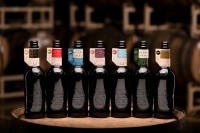 Goose Island has launched its 2022 Bourbon County Stout lineup: celebrating the 30th year of the first bourbon barrel-aged beer.The first Bourbon County Stout was created in 1992 between Goose Island brewmaster Gregory Hall and Jim Beam’s Booker Noe.“Today, Bourbon County Stout is not only a local favorite but globally known for setting the standard of barrel-aged stouts with continued innovation. This year, we commemorate the 30th Anniversary of the extraordinary Bourbon County Stout history with a lineup sure to excite new and diehard fans alike,” says the brewery.The seven variants this year are:
Goose Island has launched its 2022 Bourbon County Stout lineup: celebrating the 30th year of the first bourbon barrel-aged beer.The first Bourbon County Stout was created in 1992 between Goose Island brewmaster Gregory Hall and Jim Beam’s Booker Noe.“Today, Bourbon County Stout is not only a local favorite but globally known for setting the standard of barrel-aged stouts with continued innovation. This year, we commemorate the 30th Anniversary of the extraordinary Bourbon County Stout history with a lineup sure to excite new and diehard fans alike,” says the brewery.The seven variants this year are: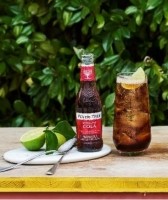 Fever-Tree has introduced Distillers Cola in Australia: a mixer made of Caribbean kola nuts, Tahitian Limes and a selection of distilled botanicals and spices. “For the past decade gin has had great tonic to mix with, but whisky and rum have been patiently waiting for a premium cola to complement rather than hide their unique flavor profiles,” says the brand.”Now, with Aussies enjoying whisky with a mixer at the same rate as gin, Fever-Tree is set to revolutionize Whisky and Cola just as they have done with Gin and Tonic.”Where leading cola brands use their strong flavor profiles to mask the flavor of spirits, Distillers Cola has been designed to complement and elevate the flavor of whiskies from the finest distilleries around the world.”Fever-Tree Distillers Cola will be available at the end of August in 4 x 200mL packs from Dan Murphy’s nationally for RRP $9.49.Black Tower Club Edition
Fever-Tree has introduced Distillers Cola in Australia: a mixer made of Caribbean kola nuts, Tahitian Limes and a selection of distilled botanicals and spices. “For the past decade gin has had great tonic to mix with, but whisky and rum have been patiently waiting for a premium cola to complement rather than hide their unique flavor profiles,” says the brand.”Now, with Aussies enjoying whisky with a mixer at the same rate as gin, Fever-Tree is set to revolutionize Whisky and Cola just as they have done with Gin and Tonic.”Where leading cola brands use their strong flavor profiles to mask the flavor of spirits, Distillers Cola has been designed to complement and elevate the flavor of whiskies from the finest distilleries around the world.”Fever-Tree Distillers Cola will be available at the end of August in 4 x 200mL packs from Dan Murphy’s nationally for RRP $9.49.Black Tower Club Edition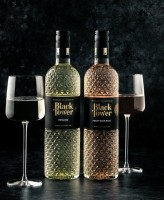 German wine brand Black Tower has launched its new premium Club Edition range in the UK.The newly-crafted wines, which are 100% vegan, will be presented in a bespoke cut-glass bottle.Family-owned winery Reh Kendermann felt it was the right time to add a premium tier to their popular range. “Premiumization has been a key trend over the last two years: and although this might be impacted by the ‘Cost of Living’ crisis, history has shown the wine category is resilient in times of economic torment. More than ever, shoppers will be in need of mini luxuries and will want to cheer themselves and their loved ones up,” says the brand.The range comes in an off-dry, German Riesling, as well as a Provence style, pale Pinot Noir Rosé.This launch coincides with the transfer of all of the Black Tower business into North South Wines following Reh Kendermann becoming a shareholder in April 2020.The wines will initially launch into Wholesale Cash & Carry Impulse and Online channels and are available exclusively through North South Wines.Cold-pressed juiceBritvic’s plant-based drink brand Plenish has just launched the latest addition to its range of cold-pressed juices and cleanses, called Rise.“Packed with 100% organic fruit and vegetables, Rise combines the natural deliciousness of juicy pineapple and pear with spinach, cucumber and a zing of lime for a perfectly sweet and uplifting taste,” says Britvic.“An easy introduction to first time green juice drinkers, as well as a perfectly nutritious addition to the day – with naturally occurring vitamin C, A and folic acid to support the immune system and energy release. All the goodness you need, and nothing you don’t (no artificial ingredients, no flavorings, no added sugars – no need).”UK soft drink manufacturer Britvic acquired Plenish in 2021, strengthening its presence in the plant-based sector. .
German wine brand Black Tower has launched its new premium Club Edition range in the UK.The newly-crafted wines, which are 100% vegan, will be presented in a bespoke cut-glass bottle.Family-owned winery Reh Kendermann felt it was the right time to add a premium tier to their popular range. “Premiumization has been a key trend over the last two years: and although this might be impacted by the ‘Cost of Living’ crisis, history has shown the wine category is resilient in times of economic torment. More than ever, shoppers will be in need of mini luxuries and will want to cheer themselves and their loved ones up,” says the brand.The range comes in an off-dry, German Riesling, as well as a Provence style, pale Pinot Noir Rosé.This launch coincides with the transfer of all of the Black Tower business into North South Wines following Reh Kendermann becoming a shareholder in April 2020.The wines will initially launch into Wholesale Cash & Carry Impulse and Online channels and are available exclusively through North South Wines.Cold-pressed juiceBritvic’s plant-based drink brand Plenish has just launched the latest addition to its range of cold-pressed juices and cleanses, called Rise.“Packed with 100% organic fruit and vegetables, Rise combines the natural deliciousness of juicy pineapple and pear with spinach, cucumber and a zing of lime for a perfectly sweet and uplifting taste,” says Britvic.“An easy introduction to first time green juice drinkers, as well as a perfectly nutritious addition to the day – with naturally occurring vitamin C, A and folic acid to support the immune system and energy release. All the goodness you need, and nothing you don’t (no artificial ingredients, no flavorings, no added sugars – no need).”UK soft drink manufacturer Britvic acquired Plenish in 2021, strengthening its presence in the plant-based sector. .